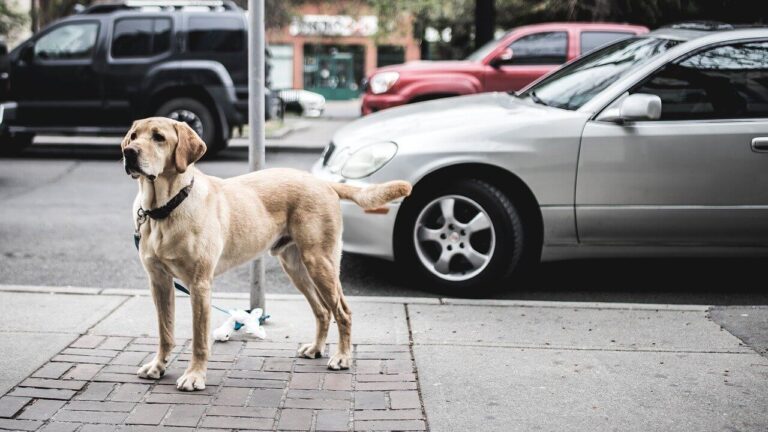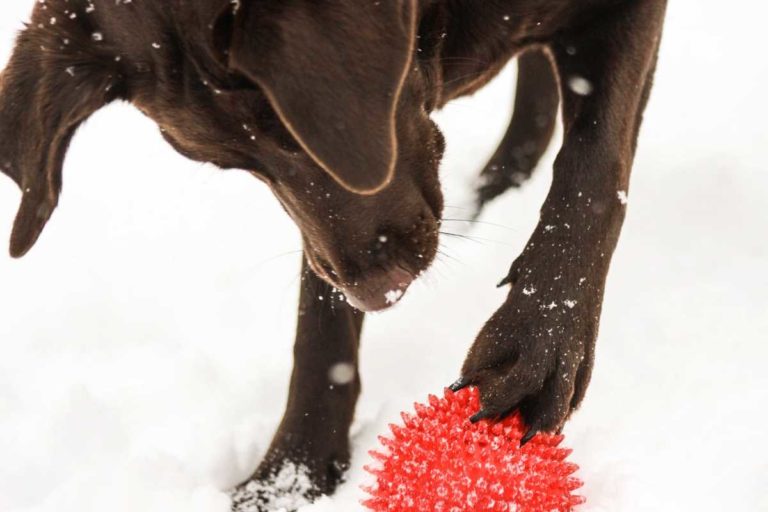Both dog harnesses and dog collars are products you’ll see everywhere for pets, but there are pros and cons to using both.
If you’ve looked recently, you’ll find a huge variety of different types of collars, harnesses, and similar products online and in pet stores, but how do you figure out what to get for your Lab? And what about adapting to changing circumstances as they grow?
What might make sense for your small puppy could be very different when your Labrador reaches adult size and becomes enormous (and likely very energetic)!
While both collars and harnesses can be relevant products in the right circumstances for your Labrador Retriever, we’re going to go over the advantages and disadvantages of both of them to help you make the best choice for your dog.
(This article may contain affiliate links. As an Amazon Associate I earn from qualifying purchases. Learn more)
We own a wide variety of collars and harnesses for all of our Labrador Retrievers and have wasted a ton of our own money through the years on collars that aren’t helpful, or harnesses that seem to make the problem they’re trying to solve actually worse.
So here are some helpful specific recommendations based on actual real-life use of a harness vs. collar for Labradors of all ages.
Collars:
The typical dog collar you’ll find sold online or in a pet store is a flat collar made of woven material. You can also find them made of other materials such as leather.
Most collars have a plastic clip that snaps into place around your dog’s neck and is usually adjustable, up to a certain point. Beyond that point, you have to go up to the next size.
They come in several sizes from small sizes for puppies to XL for the biggest Labrador Retrievers weighing over 100 lbs.
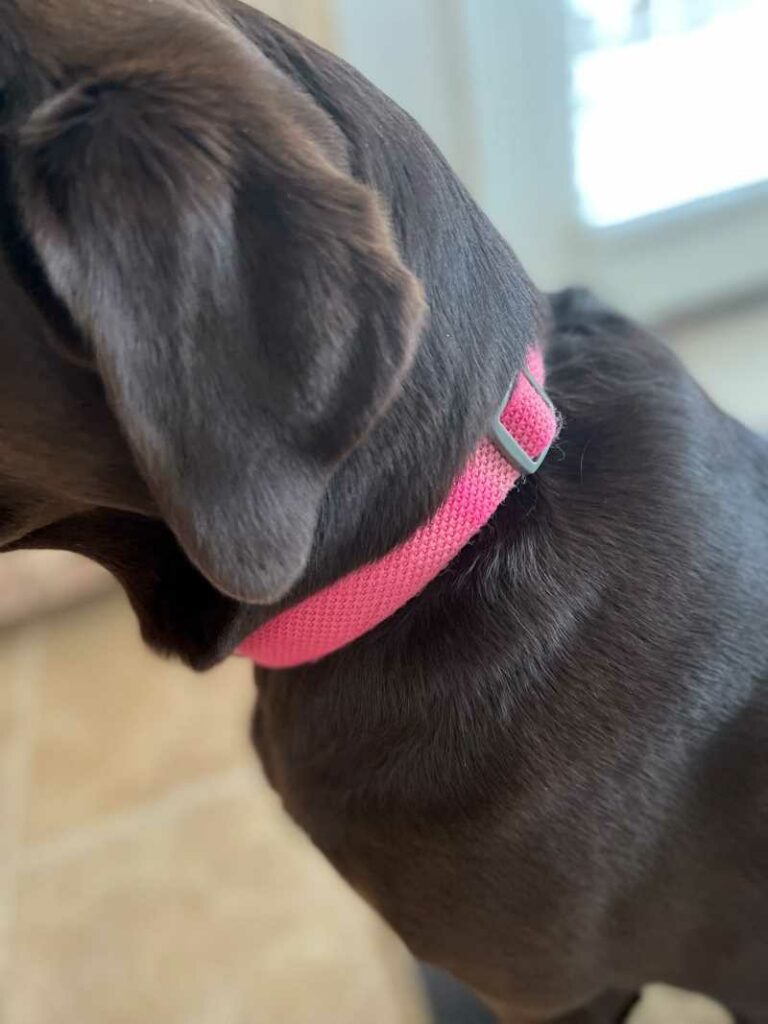
They usually have a D-ring sewn into the fabric so that you can attach ID tags or your dog microchip tag info, in addition to things you might also need to display, such as a dog rabies tag or local dog license.
(Note: There are several other types of specialty collars such as prong collars, ”choke” collars, and E-collars, which we’ll cover in another article. What we’re covering here are the standard flat collars that you see most dogs wearing for daily use.)
If you’re looking for a discussion of the Gentle Leader, which is a specific type of head collar for dogs like Labradors, head on over to this article where we cover the Gentle Leader in depth for you!
Pros:
- Collars are relatively inexpensive and take up little room on your dog’s body.
- They are more likely to be tolerated by pets who “don’t like to wear things,” a category which some Labradors often fall into. If your Lab is sensitive or dramatic (yes, we know all about those) they may tolerate a collar better than a harness.
- Collars can often be found in a wide variety of colors, designs, and patterns. You can have your dog’s name imprinted directly on their collar, or you can get your Lab’s favorite sports team reflected on theirs as well. The personalization options are virtually endless.
- Collars are washable and low-profile.
- They are faster to get on and keep on for daily living and for walks.
Cons:
- Collars can snap off or catch on objects like fences, causing a potential danger for your Lab. We’ve known several owners whose dogs have died by hanging (tragically) because they were unsupervised outside and their collar caught on something and did not release. It’s a horrible outcome for you and your beloved Labrador.
- If your Lab is wearing a collar and playing roughly with another dog, such as at a dog park, the other dog may use your dog’s collar to try to yank or grab onto your Lab. This is something you’ll definitely need to watch out for at group play events, especially at dog parks.
(Read more about the 4 pros and cons of taking your Lab to dog parks here)
- If you take your Lab to doggie daycare, they may not let your dog wear a collar, or may take your dog’s collar off for safety reasons during playtime with other dogs.
- Collars don’t offer a lot of control. They limit your ability to control your dog if they are pulling on the leash or running while you’re holding them.
- Collars aren’t good for use in the car (if you’re clipping into a safety restraint) because they won’t restrain them. You won’t want to use a collar to clip into a seat harness because your Lab can be injured in a sudden stop or accident.
Harnesses:
The typical dog harness is a system that contains multiple straps that go over the dog’s neck and front shoulders, clipping in several areas to allow it to be put on your dog more easily.
They even make them for puppies!
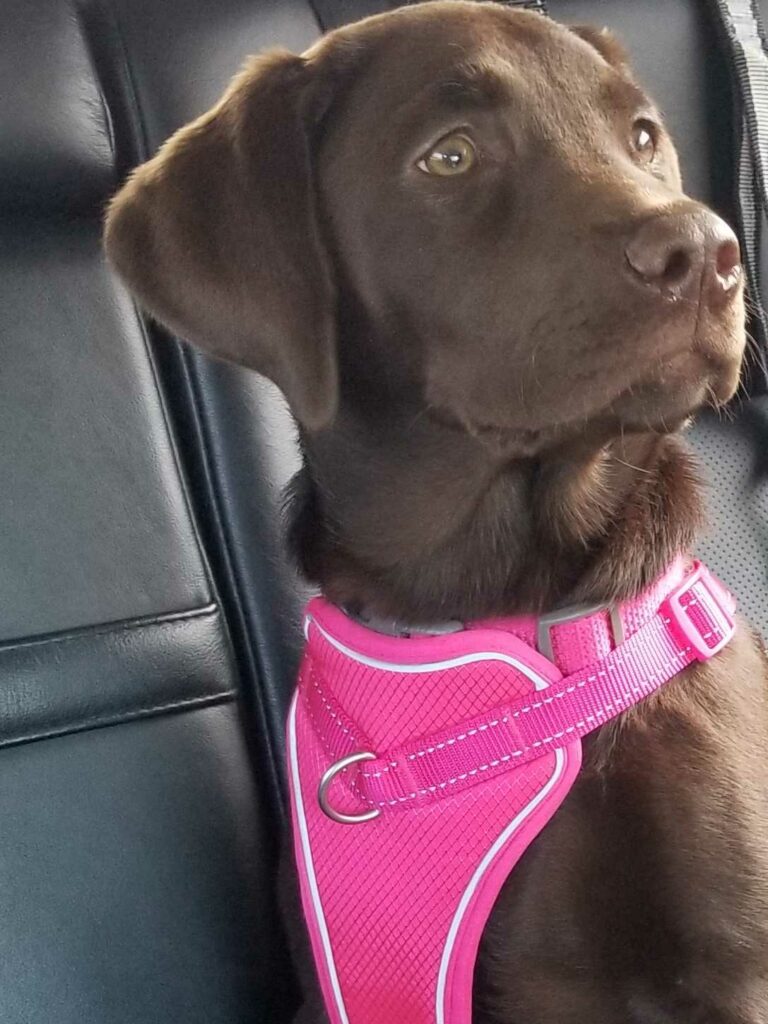
Some or all of the straps may be adjustable, and as with collars they come in sizes from small puppy to XL. You can find different colors, designs, and some personalization, but there often isn’t as much variety in harness styles as there is in collars.
The harness will have a silver D-ring on either the back strap of your dog (between their shoulders) or the front strap (on their chest between their front legs). This D-ring is where your leash will attach to! Very important distinction here!
Back and front-clip harnesses are NOT the same and do not function the same, so please read on to learn the pros and cons of both before selecting the right one for your dog.
Front-clip harnesses like the Easy Walk will have two different colored straps so you know how to fasten it on your dog correctly with the leash clip in the front.
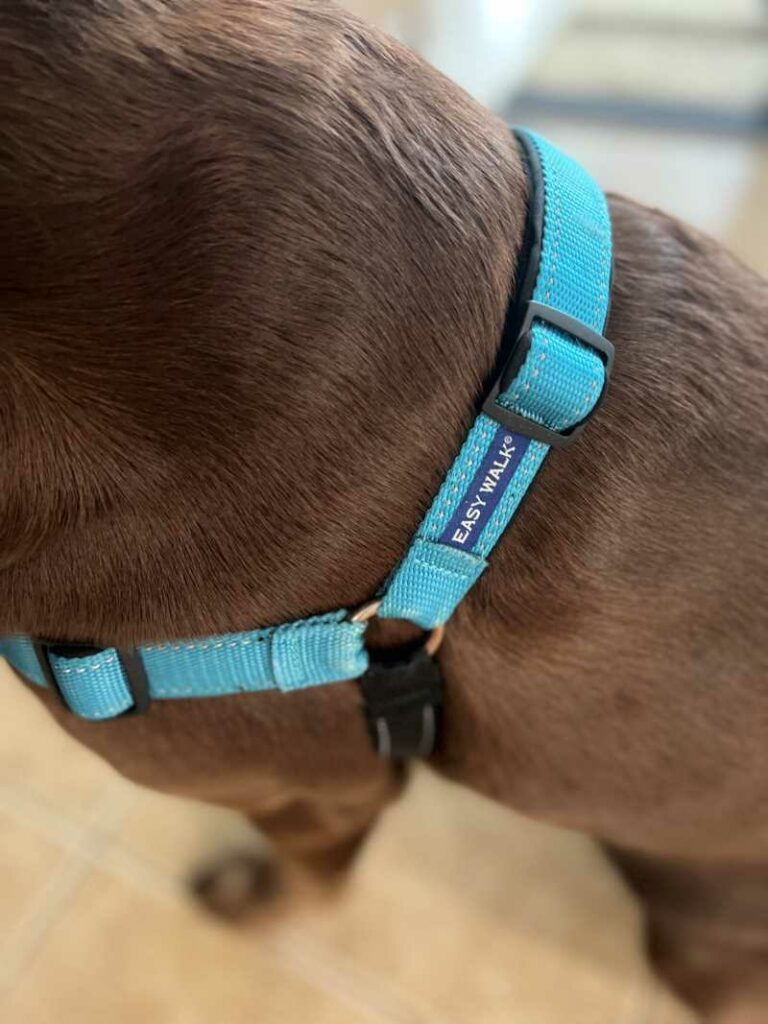
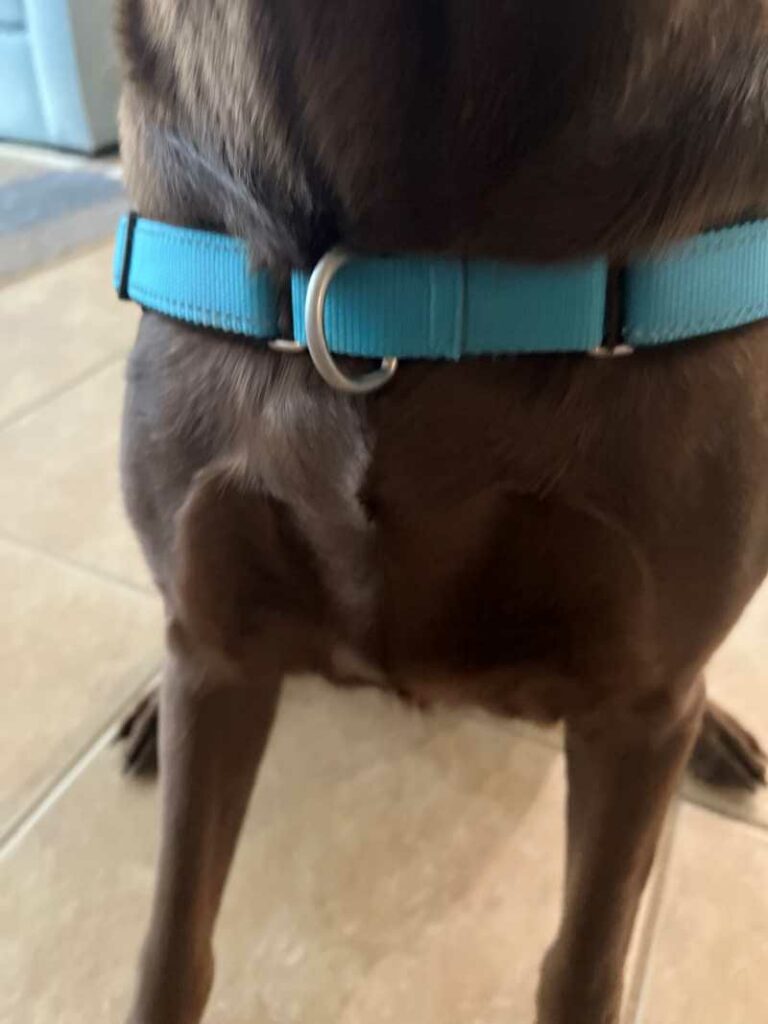
Pros:
- Harnesses give you more control over your dog than a collar, especially if your dog is pulling on a leash.
- A harness can distribute more weight throughout the body, so when using them on a car ride they tend to hold your dog better in place when clipped into a proper restraint system.
- If your dog is strong and powerful, harnesses can allow you to handle your dog better than a collar would on a leash.
- A harness doesn’t usually go around your dog’s neck so there should be less pressure and force distributed on that area of their body.
- A front-clip harness can help stop your dog from pulling, because the leash attaches to the D-ring on the front of your dog’s chest. When they try to pull, it turns their body slightly to the side, making pulling less effective.
Cons:
- A back-clip harness (one that has the D-ring where your leash attaches) can actually make your Labrador pull on the leash and drag you with more power than if you used a flat collar. The D-ring located on the back is the equivalent of your dog being an Iditarod sled dog in Alaska, except you have no sled to ride on! It’s not a fun experience for you, and you can really get dragged by your dog wearing one of these!
- A front-clip harness can help prevent leash pulling but isn’t good to use in the car.
- Harnesses can be a bit overwhelming on small puppies that are still getting used to things.
- If you have a “Lab of unusual size,” you may have a harder time getting a good fit for their body with a harness, or you may have to try multiple brands to find one that works.
- If you want a lot of stylish personalization, it may be harder to find in a harness vs. collar.
- A harness can be cumbersome to put on your dog, and your dog may not like it. We have a Lab that is very dramatic and pretty much throws a tantrum on the floor when her harness makes an appearance (still, she gets over it quickly because it usually means a fun adventure is about to happen).
When to Use a Collar vs. Harness
In our experience with Labradors, a collar is good for everyday use, assuming you aren’t leaving your Lab at risk of catching their collar on something that could cause choking. We recommend you never leave your dog tied up outside or anywhere unsupervised attached to a collar or harness because this could endanger their safety.
Our Labs are never unsupervised outside and their environment both indoors and out is pretty cushy and controlled for hazards, though with Labradors you probably know anything is really possible.
We use a back-clip harness for car rides, and we use a front-clip harness for excitable environments like going to pet stores, human stores that are dog-friendly, and heading to places like the vet’s office.
(Check out: 7 Dog-Friendly Stores You Can Take Your Lab)
We also use a Gentle Leader from time to time, which you can read more about in this article here.
While both dog harnesses and collars can be suitable for your dog, it’s important to know the pros and cons of both. We always suggest you ask your vet what they recommend for your particular Lab because all Labradors are unique, and soon you’ll be on your way to many adventures together.




